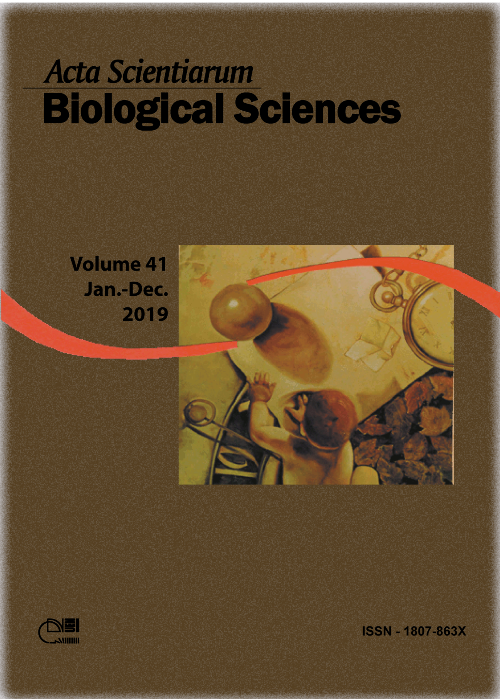Reproductive indicators of the endemic species Astyanax bifasciatus (Teleostei: Characidae) in a tributary of the Lower Iguaçu River Basin, Brazil
Abstract
The reproductive process promotes morphophysiological and behavioral changes in fish species throughout their life cycle. Its success is vital to define their resilience in the environment. This study aimed to evaluate the reproductive biology of the endemic fish species Astyanax bifasciatus in a tributary of the Lower Iguaçu River Basin, Paraná, Brazil. Fish were collected monthly at four sites along the Jirau Alto River in the city of Dois Vizinhos from October 2015 to September 2016. A standardized catch effort with gill nets and fish traps was used. In the laboratory, standard length and total weight were recorded. After anesthesia, the animals were sectioned to macroscopically determine the sex, sexual maturity stage, and presence of celomatic fat. The gonads and liver were removed to determine the gonadosomatic and hepatosomatic indexes, respectively. A total of 160 individuals (104 females and 56 males) were used. The gonadosomatic index, frequency of the gonadal maturation stages, and condition factor showed a long reproductive period with two investment cycles for both sex. Length at first sexual maturity was 4.57 cm for females and 3.56 cm for males. The reproductive data corroborate the generalist profile of the species and demonstrate a high degree of adaptive capacity, even in smaller tributaries.
Downloads
DECLARATION OF ORIGINALITY AND COPYRIGHTS
I Declare that current article is original and has not been submitted for publication, in part or in whole, to any other national or international journal.
The copyrights belong exclusively to the authors. Published content is licensed under Creative Commons Attribution 4.0 (CC BY 4.0) guidelines, which allows sharing (copy and distribution of the material in any medium or format) and adaptation (remix, transform, and build upon the material) for any purpose, even commercially, under the terms of attribution.
Read this link for further information on how to use CC BY 4.0 properly.












1.png)




3.png)













